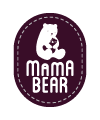Whether it’s a scheduled C-section or a last minute medical necessity, many pregnant women have undergone this method of delivery. What’s important to note for any women who deliver via Cesarean section, is that you can still breastfeed successfully. Overcome the challenge of breastfeeding after a Caesarean birth with these 7 tips below:

If you have planned for a scheduled C-section, it helps to prepare early – even right before you go in for the delivery. One of the recommended ways is to include a safe breastmilk booster for pregnant mothers, such as Almond Oat Cookies from Mamabear. This delicious and healthy snack is perfect for all ages and has been fortified with superfood that stimulates breastfeeding glands from within.

Skin-to-skin contact right after the baby is out of the womb is an important part of the whole process, including in c-section delivery. Evidence suggests that newborns that are placed with their mother immediately and breastfeed within the first hour after birth have better breastfeeding outcomes. This includes a reduced risk of milk delay and improved milk production in the long term.
Ask for your doctor or hospital staff to facilitate skin-to-skin contact, including requesting to let the mother and baby be in the same room as often as possible after the delivery.

A c-section delivery may cause a slightly delayed milk production compared to natural birth, where the transition from colostrum or early milk to breastmilk coming in by 72 hours of birth. Research shows that early and frequent sucking helps to switch on these milk-making cells, including through breast pumps within a few hours after delivery.
To get a head start, consult your doctor or nurse if you can be given a change to breastfeed as soon as possible. Also, ask your doctor when the most ideal time to start pumping.

Mothers who deliver via c-section may have more limited movement due to pain from the incision site. Not to mention, you have may IV or other medical tubes attached to monitor your progress, such as blood pressure. For this reason, do not shy away from asking for help from the hospital staff, your spouse or family to adjust the best breastfeeding position for you and your baby

Breastfeeding your baby will be a much easier task when your pain is under control. Refusing to take the needed pain medications will only result in slow recovery which affects your breastmilk production. Ask for your doctor’s recommendation for painkillers that are safe for breastfeeding. Your baby may feel drowsy or sleepy if you are taking these medicines, so be sure to consult with your doctor for a smooth breastfeeding success.

Your stamina may be lower after a Cesarean delivery, but keep your pumping spirit up. There may be a chance that the baby is not staying in the same room with you so this limits the possibility for direct breastfeeding. If so, try to keep pumping every 2- 3 hours to keep your supply up.

Whether you are giving birth naturally or through a c-section, maintaining a steady breastmilk supply is key to a successful breastfeeding. The easiest way to overcome supply problem is by consuming nutritious food and breastmilk boosters from Mamabear. Find natural breastmilk boosters such as our herbal lactation tea and powder drinks which have been effective with increasing breastmilk production.
Stay tuned for more interesting articles about breastfeeding with our natural boosters. Happy breastfeeding moms!
Source :
https://www.medela.us/breastfeeding/articles/how-to-make-the-most-of-nursing-after-a-c-section
https://www.verywellfamily.com/breastfeeding-after-a-c-section-431676
https://www.whattoexpect.com/first-year/breastfeeding/breastfeeding-after-c-section/
